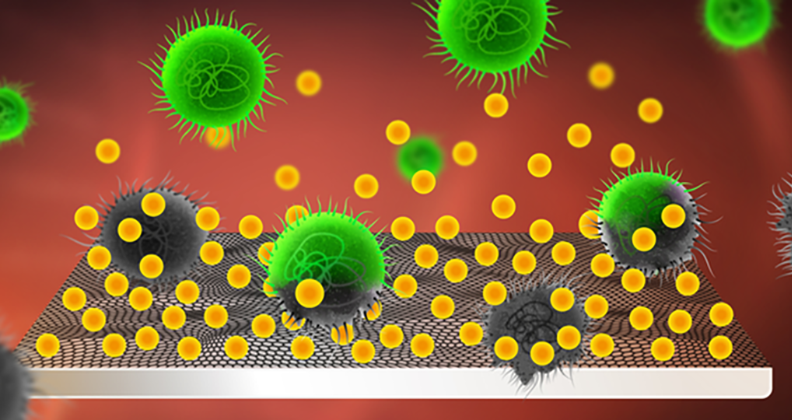
Researchers working at the Chalmers University of Technology in Sweden announced the development of a new graphene coating proven to prevent bacterial infections in implants over long periods. While coatings designed to stave off implant-associated infections have been in development in orthopedics for some time, the graphene coating prevents infections over the long term through a special sustained release feature, according to Santosh Pandit, a researcher at the Department of Biology and Biological Engineering at Chalmers.
A recent study published in Scientific Reports showed that Pandit and other researchers successfully bound water-insoluble antibacterial molecules to graphene, which allowed for the controlled and sustained release of molecules.
“Currently, there are surface modified as well as antibiotic coated implant materials that prevent cross infections,” Pandit said. “Our method exploits the peculiar property of graphene to absorb hydrophobic molecules, which could hold up these molecules very well and release them in a sustained way to provide long-term protection. Essentially, we’re expanding the way to utilize hydrophobic antimicrobial molecules (natural products, essential oils, peptides) with the use of graphene. The method we used for drug integration and coatings is very simple and industrially scalable.”


Usnic acid (yellow) is integrated in and released from the implant’s graphene coating. The usnic acid kills the bacteria (green) and thereby prevents them from forming infectious biofilms on the surface. Photo Credit: Yen Strandqvist/Chalmers University of Technology
Bacterial infections stemming from surgical implants cause significant healthcare problems, ranging from huge costs associated with prolonged antimicrobial therapies to the forced removal of implants. Biofilms, the phenomenon of bacterial cells colonizing on implant surfaces to form infectious microbial communities, are especially difficult to treat, said Pandit, who claimed that the living cells within biofilms are 1,000 times more resistant to antimicrobials.
To develop the method of binding graphene to water-insoluble antibacterial molecules, Pandit and his fellow researchers referenced published simulation results showing the lipophilic characteristic of graphene and began experimenting. The team discovered that graphene had an uncanny ability for absorbing hydrophobic molecules. Pandit describes the method for creating the coating and integrating it with antimicrobial drugs as very simple.
While Pandit acknowledged that his team’s findings are a long way from being applied to clinical use in humans, he pointed to important potential uses in orthopedic implants in the future. “This can be used to coat any orthopedic implant which is prone to microbial colonization and infections. Of course, the major benefit is long-term antibiofilm activity and prevention of cross infections after the implantation. More importantly, this can expand the way to use hydrophobic antimicrobial molecules in implant coatings using graphene by a facile method.”
PM
Patrick McGuire is a BONEZONE Contributor.




